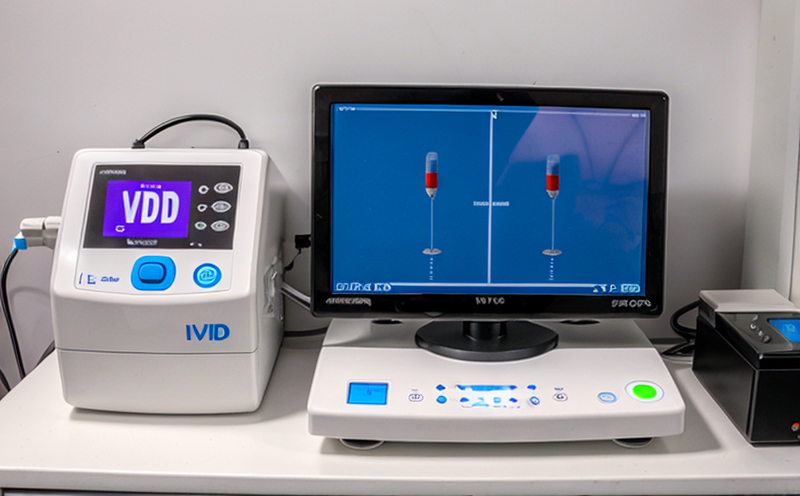ISO 18113-3 Self-Testing IVD Labeling Verification Testing
The ISO 18113-3 standard is a critical component in the development and regulation of In Vitro Diagnostic (IVD) devices, particularly those intended for self-testing. This international standard ensures that all labeling on these diagnostic products complies with regulatory requirements, thereby enhancing patient safety and minimizing risks associated with incorrect or misleading information.
Self-testing IVD devices are medical instruments used by individuals to monitor health parameters such as blood glucose levels in diabetes management, pregnancy tests, and other home-use diagnostics. These devices require precise labeling that communicates critical information effectively. Misleading labels can lead to improper use, potentially resulting in inaccurate test results or harmful consequences.
The ISO 18113-3 standard specifies requirements for the design, content, format, and implementation of self-testing IVD device labeling. Compliance with this standard is essential for manufacturers aiming to meet regulatory expectations and gain market access. It covers various aspects including readability, color contrast, font size, language selection, and the inclusion of necessary warnings.
Testing services aligned with ISO 18113-3 ensure that all label elements are compliant with international standards. Our testing team uses advanced imaging technology to capture high-resolution images of labels under controlled lighting conditions. This allows for accurate assessment of text clarity, color contrast, and overall legibility. We also employ automated optical character recognition (OCR) software to verify the accuracy of alphanumeric content.
Our laboratory utilizes state-of-the-art equipment such as spectrophotometers to measure color properties ensuring they meet specified standards. Additionally, we conduct readability tests by simulating real-world conditions where users might interact with the labels. This includes testing against background colors and at various distances typical for home use.
The testing process involves meticulous examination of each label produced during manufacturing batches. Any discrepancies found are reported back to manufacturers promptly so they can address them before final product release. By adhering strictly to ISO 18113-3 guidelines, our clients ensure their products meet stringent regulatory requirements globally.
Our team’s expertise lies not only in technical proficiency but also in understanding the broader implications of non-compliance for healthcare providers and patients alike. We provide detailed reports outlining findings along with recommendations tailored specifically towards improving label quality based on our assessments.
To sum up, ISO 18113-3 labeling verification testing is crucial for ensuring that self-testing IVD devices comply with international standards, thereby safeguarding public health. Our rigorous yet efficient testing protocols guarantee that labels are clear, accurate, and compliant, enhancing overall product reliability and trustworthiness.
Industry Applications
The application of ISO 18113-3 self-testing IVD labeling verification testing extends beyond just compliance; it plays a vital role in ensuring the safety, efficacy, and reliability of diagnostic devices across various sectors within healthcare. Manufacturers benefit from this service by reducing potential risks associated with non-compliant labels which could lead to adverse events or recalls.
In the diabetes management sector, accurate labeling ensures that patients receive correct instructions on how to use their glucometers effectively. This reduces instances where incorrect readings might prompt unnecessary medical intervention or even exacerbate existing conditions. Similarly, pregnancy tests need precise labeling indicating proper usage steps and expected results timelines which help consumers make informed decisions about seeking further medical advice if needed.
For pharmaceutical companies developing home-use diagnostic kits, ensuring compliance with ISO 18113-3 helps build consumer confidence in the products they produce. Clear communication regarding test methods, interpretation guidelines, and safety measures fosters trust between manufacturers and end-users. This is especially important given increasing demand for accessible healthcare solutions outside traditional clinical settings.
Our testing services also support regulatory bodies responsible for enforcing compliance with international standards like ISO 18113-3. By providing independent verification of label accuracy, we assist these agencies in maintaining high standards within the industry while facilitating fair competition among compliant manufacturers.
Customer Impact and Satisfaction
Compliance with ISO 18113-3 self-testing IVD labeling verification testing has direct positive impacts on customers, particularly in terms of improved safety and efficacy. Patients can trust that the instructions provided are clear and accurate, leading to more reliable test results. This fosters greater confidence in home-use diagnostic devices, encouraging responsible self-care practices.
For healthcare professionals who rely heavily on these tests as part of their practice, having compliant labels ensures they receive consistent information across different brands and models. This standardization supports better patient care by reducing variability in interpretation and application of test results.
From an operational perspective, compliance with this standard streamlines the approval process for new products entering markets internationally. It eliminates delays caused by non-compliant labeling issues during regulatory review periods, thus benefiting both manufacturers and consumers alike.
International Acceptance and Recognition
The ISO 18113-3 standard is widely recognized and accepted globally for its stringent requirements regarding self-testing IVD device labeling. Regulatory authorities in countries such as the United States, European Union member states, Canada, Australia, New Zealand, Japan, South Korea, and many others have incorporated compliance with this standard into their regulatory frameworks.
Manufacturers who adhere to ISO 18113-3 demonstrate their commitment to quality and safety. This is particularly important in today’s interconnected world where cross-border trade in medical devices is increasingly common. By ensuring that all labels meet these international standards, companies can confidently expand into new markets without encountering barriers related to labeling compliance.
The acceptance of this standard also contributes significantly towards building trust among consumers worldwide. As more countries adopt and enforce regulations based on ISO 18113-3, it becomes easier for patients and healthcare providers to identify reliable diagnostic tools regardless of geographical location.





